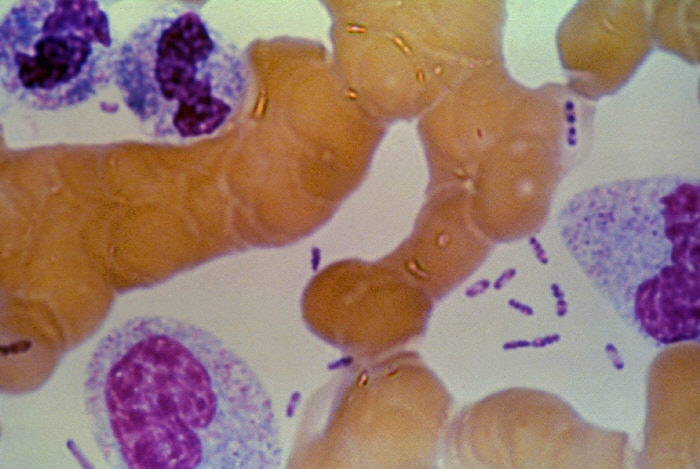Plague

The disease agent: Yersinia pestis
Plague is caused by infection with the bacterium Yersinia pestis, which is transmitted by fleas.
The first documented pandemic (widespread outbreak) of plague occurred in A.D. 541 in Africa, and killed approximately 40 million people. The second recorded plague pandemic (commonly referred to as the “black death”) began in the 1300s, lasted over 200 years, and decimated the human population of Europe. A third plague pandemic occurred in Asia in the late 1800s. Currently, 1,000-3,000 cases of plague occur worldwide annually.
Impact on human health:
- Historically, plague has claimed the lives of more people than all wars combined.
- Although plague is treatable with antibiotics, it still remains a threat in rural areas.
What you can do to protect yourself:
- If you have pets, consult with your veterinarian on effective flea control methods.
- Avoid contact with wild rodents/fleas, especially when visiting areas where plague occurs.
- Consult your doctor if you suspect you have been exposed to plague.
Impact on animals/wildlife:

Reservoir: wild rodents
- Plague is deadly to many rodents, and outbreaks in the western United States have been associated with prairie dogs, wood rats, and chipmunks.
- A wide variety of wild animals (including rabbits, wild pigs, and carnivores) may become infected with plague and may serve as reservoirs, but rarely transmit it to people.
- Domestic animals (especially dogs and cats) may be exposed to plague-infected fleas while eating wild rodents.
Useful links:
- Fact sheets
- Images of symptoms
- Fact sheets
- California plague reports
Sources:
Mullen, G.R. and L.A. Durden. 2009. Medical and Veterinary Entomology, 2nd ed. Academic Press. Burlington, MA.
